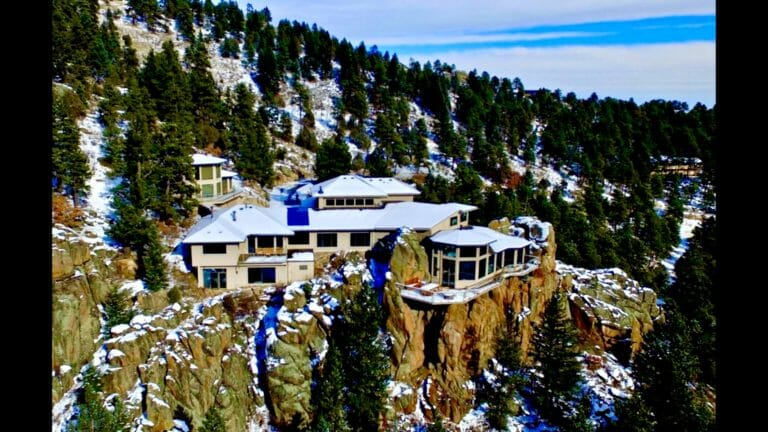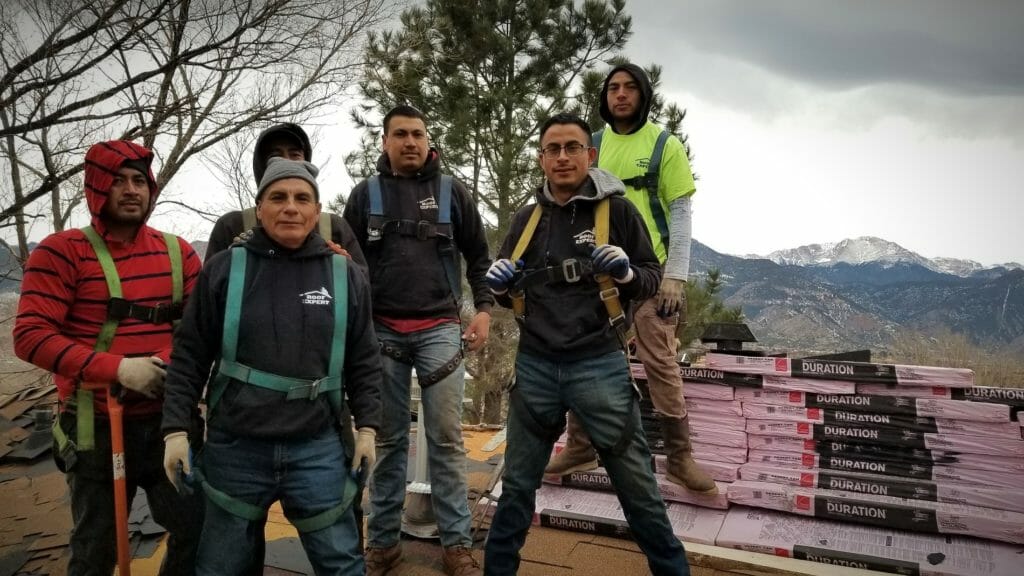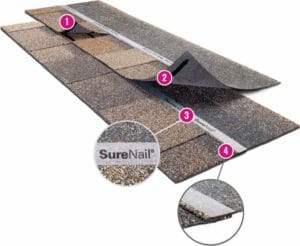
Roofs can be installed in the Winter.
Have no fear, Winter is here! Many homeowners question having their roof replaced during the cold months or Winter season. Replacing a roof does not have to be put on hold until the Spring or Summer months, if your roofing contractor follows a few simple yet pertinent instructions while installing!
Temperatures, as well as wind are both key factors in roof installation during the cold season. There is no “lucky” temperature that has been instructed to roofers installing shingles in cold weather, but when questioned many shingle manufacturer’s smile at the mention of 40 degrees and climbing. Installing in temperatures lower than 40 degrees can result in premature fracturing of the fiberglass matting. You do not only need to be careful of the temperature during the day of the install, but also the following days. You do not want to install if temperatures are plummeting the day after the installation. Keep in mind, you might also have 40 and climbing temperatures but high wind speed. If there is great wind, you do not want to install. Blow offs can occur as well as the air temperature might be 45 but the wind blowing might leave the actual shingle temperature at a lower temperature causing shingle defects. Asphalt shingles contain a chemical adhesive strip that is heat activated, in which case, the shingle does not have the ability to properly seal in freezing temperatures. This leaves homeowners vulnerable to shingle blow offs during high wind events. Keep in mind, during the colder months of the year, shingles will not always lay flat right away. You might see that there are waves along the roof, but provided the roof was installed in acceptable weather, they will settle down in due time.
Back in 2017, one of our Colorado Springs Roofing Project Managers had attended an adjuster appointment where the roof was bought by the insurance company. The project manager had worked through the entire process with the homeowner as far as taking the proper photographs, collecting proper documentation and scheduling the installation of the roof. Many details and information were passed back and forth between the insurance adjuster, homeowner, and the project manager. For the general public, a roof replacement can seem very overwhelming if you don’t deal with it often or have a knowledgeable contractor! The project manager had expressed a few times before the roof install that the shingles would not lay flat right away in the cold weather, but not to worry that over time they would settle. Mr. Jones had gone about his day to day routines and daily tasks. When the roof was installed, Mr. Jones had completely forgotten about the conversation that he had with that project manager and was frantic and concerned that his roof was not installed properly. Now, the Project Manager should have reminded Mr. Jones closer to the installation day, but we assured Mr. Jones, everything would lay flat in the warmer days to come. Time had gone by, and Mr. Jones’ roof settled down, the waves were laid down and flat and he was ecstatic with his new roof.

Roof experts enjoy installing roofs in the Winter.
There are many advantages of installing roofs in cooler temperatures or the Winter season. Colorado Springs roofers install roofs all year. Let me share some advantages of a cold weather install. Some of which include, decreased risk of scuffing caused by foot traffic. In the warmer months of the year, asphalt-based shingles heat up and roofers or anyone walking along the roof can cause damage to those shingles. Shingle defects such as scuffing, leaves homeowners vulnerable to leaks and sure does not look appealing. Insurance companies do not pay for damage caused by scuffing or foot traffic. Another benefit to installing during those chilly months is the roof installer’s endurance! High heat causes dehydration and slows down installers from performing at their maximum ability and speed.
Spring and Summer brings warmer weather, which the average person believes is the best time to install a roof. These beliefs spark a sense of urgency, which tends to leave waiting lists for homeowners to have their roofs replaced by the contractor of their choice. Waiting weeks, or possibly months can increase your potential of having possible interior leaks or damage to your potentially most valuable asset in your lifetime!
Hand sealing is a key factor in installing shingles during the cold season! Hand sealing is the process in which the installer physically enhances the sealing of shingles with roof cement. Many insurance companies allow roofing contractors to supplement for hand sealing when installing in cold weather temperatures. Hand sealing is also beneficial for the windy months, such as the severe windstorm we had here in Colorado Springs and surrounding areas back in January 2017.
Another suggestion in areas that have many months of poor weather is installing ice and water barrier. Ice and water shield is a type of roofing underlayment that assists in preventing leaks from wind driven rain, or even water from ice damming. Most roofing contractors will use ice and water around critical areas or areas that could cause potential leakage. Ice and water is actually a code requirement by certain building departments depending on the elevation. Monument and Black Forest are a few areas surrounding Colorado Springs that require ice and water up the eaves of the roof. Roofers in Colorado Springs are familiar with the codes and importance of ice and water products for the eaves.

The Sure Nail strip performs great in cold weather.
There are a few shingles that have an advantage during these colder winter months. Owens Corning provides their duration series which contains their “sure nail strip.” The sure nail strip is an engineered fabric strip in the nailing area. This strip provides nail pull – through resistance which helps prevent blow offs. Modified bitumen asphalt shingles are another product that is great to install during the winter.
There are many positives to installing or having your roof replaced in the colder season or winter months of the year. There are also many necessary precautions one must take or look out for when reroofing during this time as well. Be sure when hiring a contractor, you hire one that is reputable and a company that you can trust. In addition to the details listed in this blog, you can also find more details about cold weather installs on our youtube channel.
Cold weather installs are practical and should not be avoided. As a Colorado Springs roofer with many cold weather installs we have no issues with common sense cold weather installs. Good luck and be safe.
Submitted by:
Production Manager, Samantha C.
